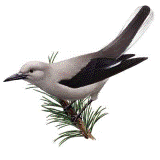Papers in the Biological Sciences
Document Type
Article
Date of this Version
2010
Citation
Published in Animal Cognition 13 (2010), pp 175-188. doi 10.1007/s10071-009-0256-6
Abstract
Many species have been shown to encode multiple sources of information to orient. To examine what kinds of information animals use to locate a goal we manipulated cue rotation, cue availability, and inertial orientation when the food-storing Clark’s nutcracker (Nucifraga columbiana) was searching for a hidden goal in a circular arena. Three groups of birds were used, each with a different goal–landmark distance. As the distance between the goal and the landmark increased, nutcrackers were less accurate in finding the correct direction to the goal than they were at estimating the distance (Experiment 1). To further examine what cues the birds were using to calculate direction, the featural cues within the environment were rotated by 90° and the birds were either oriented when searching (Experiments 2 and 3) or disoriented (Experiment 3). In Experiment 4, all distinctive visual cues were removed (both internal and external to the environment), a novel point of entry was used and the birds were either oriented or disoriented. We found that disorienting the nutcrackers so that they could not use inertial cues did not influence the birds’ total search error. The birds relied heavily but not completely on cues within the environment, as rotating available cues caused them to systematically shift their search behavior. In addition, the birds also relied to some extent on Earth-based cues. These results show the flexible nature of cue use by the Clark’s nutcracker. Our study shows how multiple sources of spatial information may be important for extracting multiple bearings for navigation.



Comments
Copyright © 2009 Springer-Verlag. Used by permission.